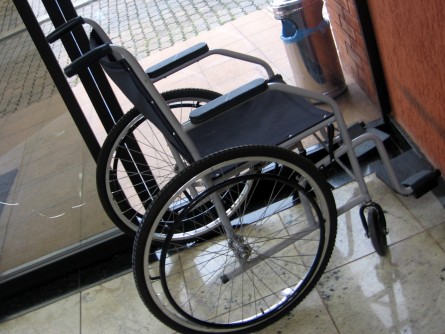Increasingly, upper-class parents buy "educational toys" for their children while poor or working-class parents can't afford them, says Bellafante:
In the way that we have considered food deserts -- those parts of the city in which stores seem to stock primarily the food groups Doritos and Pepsi -- we might begin to think, in essence, about toy deserts and the implications of a commercial system in which the least-privileged children are choked off from the recreations most explicitly geared toward creativity and achievement.
Just like food deserts are basically an urban legend, so are toy deserts. It is not that you will find a lot of educational toy stores in the South Bronx -- you won't. It is that poor and rich parents have different understanding of what is an educational toy. Lots of companies like to advertise their toys as educational. They will teach your kid the alphabet or how to read or how to count. They will have a lot of lights and sounds and require God knows how many C batteries. Plenty of poor parents buy these toys in the hope that they will make up for the advantages their children don't have.
But after many years, rich people have figured out that these toys do little if not nothing for your children. Screen time is better limited, toys that make too many noises and flash too many lights seem to shorten attention spans. Rich kids, these days, may have iPads and video games, but at least when they're younger, most of the toys their kids own are made from companies like Melissa and Doug. Melissa and Doug make wooden play-foods, dollhouses, work benches, dress-up costumes, and puzzles. Their toys don't require batteries. Just, if you'll pardon my sounding like a commercial, your child's imagination. They invite interaction with other children. They sometimes require parental direction. But mostly they just require a child's interest and full attention.
Last year, the Times ran a feature about the popularity of wooden blocks in high-performing classrooms. My own child's nursery school teacher posted a copy of it outside her classroom.
I'm sure you could spend a lot of money on wooden blocks and puzzles, but Toys R Us does sell them and you can get them pretty cheap too if you want. Plastic blocks and Lincoln logs and imitation Legos all work just as well. (If it's all in the imagination, then the materials aren't as important.)
If you go to a "children's museum," these days, places that upper-middle class bring their children on rainy days instead of the movies or the mall, they are filled with areas to push boats in water or exhibits where you can pretend to fix up a house or tables with scraps of cloth and paper and glue for kids to make art projects. They have very few electronic activities at all.
The problem is not the toy divide. It is that we have spent too much time talking about the digital divide, convincing working-class parents that what their kids are missing is technology. All the while, though, we have known that what's best for intellectual development (especially of small children) is not technology at all. The store where I finally located the Magna-Tiles, a place called Lakeshore Learning in Scarsdale, had barely a single battery-operated item on its shelves. My guess is that plenty of working-class parents would be surprised to see that. To know that their kids would be better off with a set of blocks than almost any "educational toy" at Toys R Us -- that would be a nice holiday gift.






The most popular produced items for the masses are generally not the best thought out . It takes effort to find anything of quality even toys that will be educational and fun for kids. But your child should get the best and I find it’s a total sell out to say only rich kids get certain toys. To this I say lazy parents give their kids poor choice of toys.